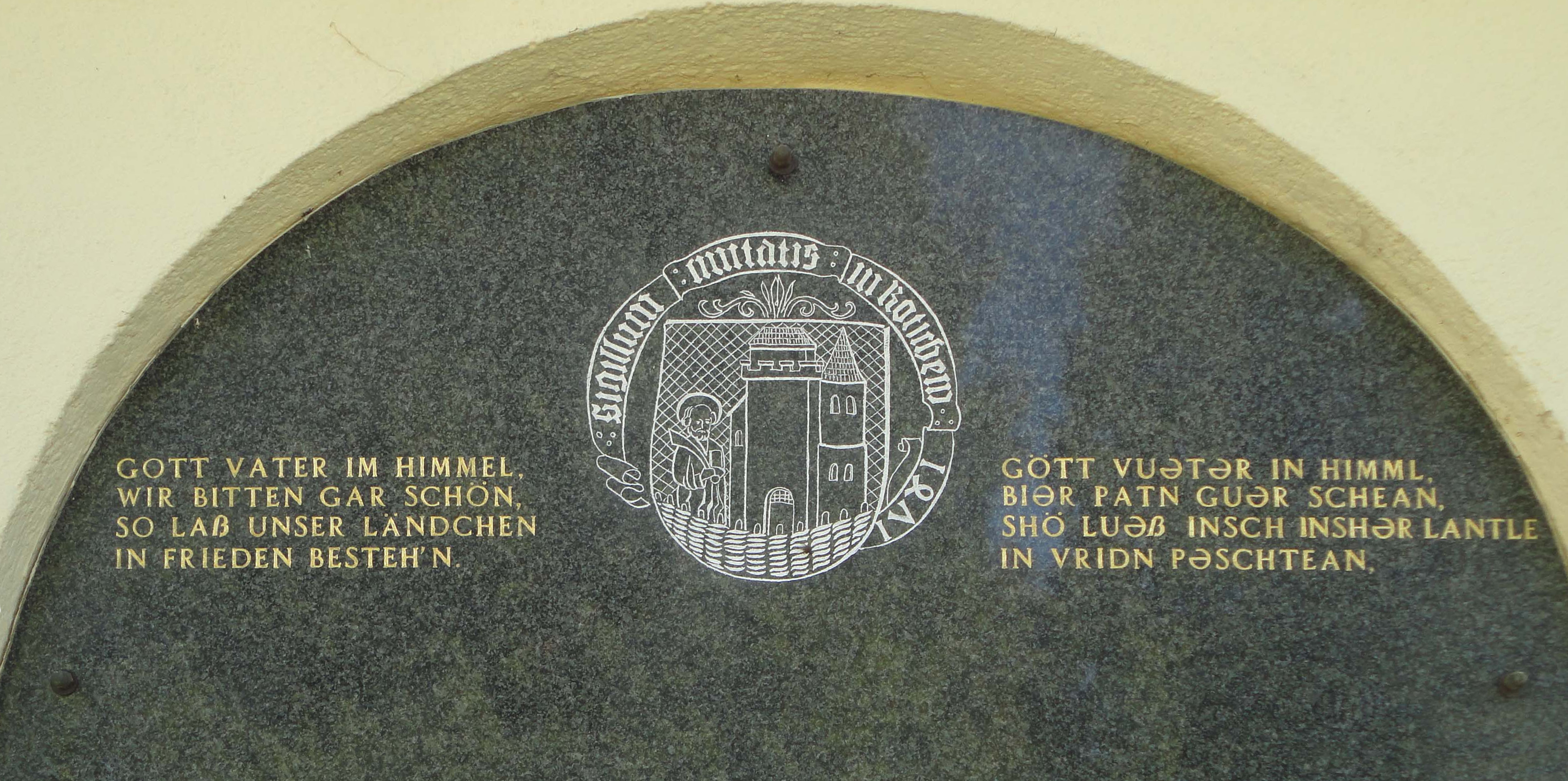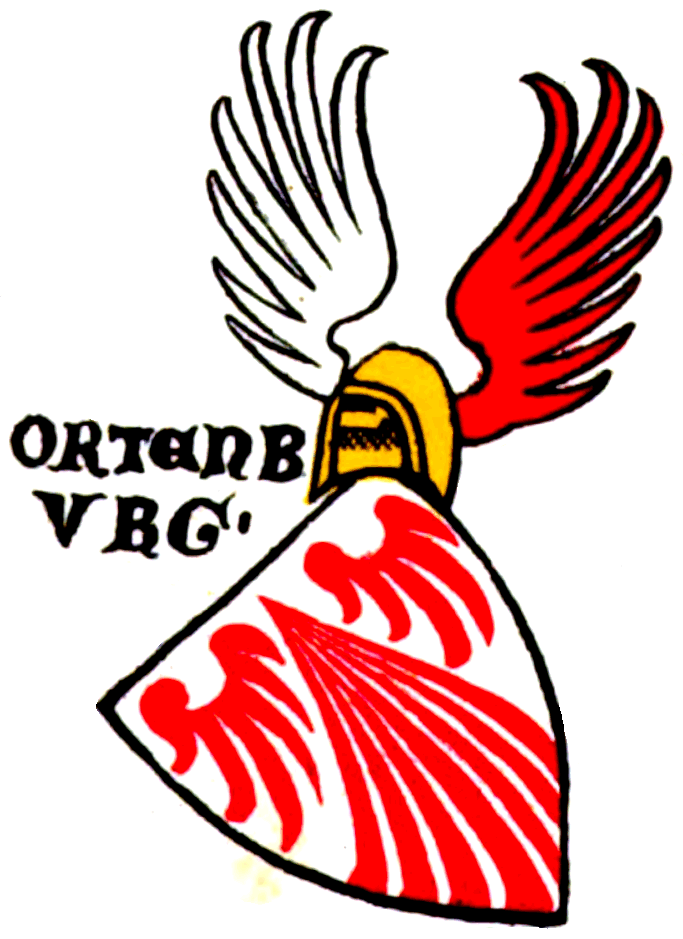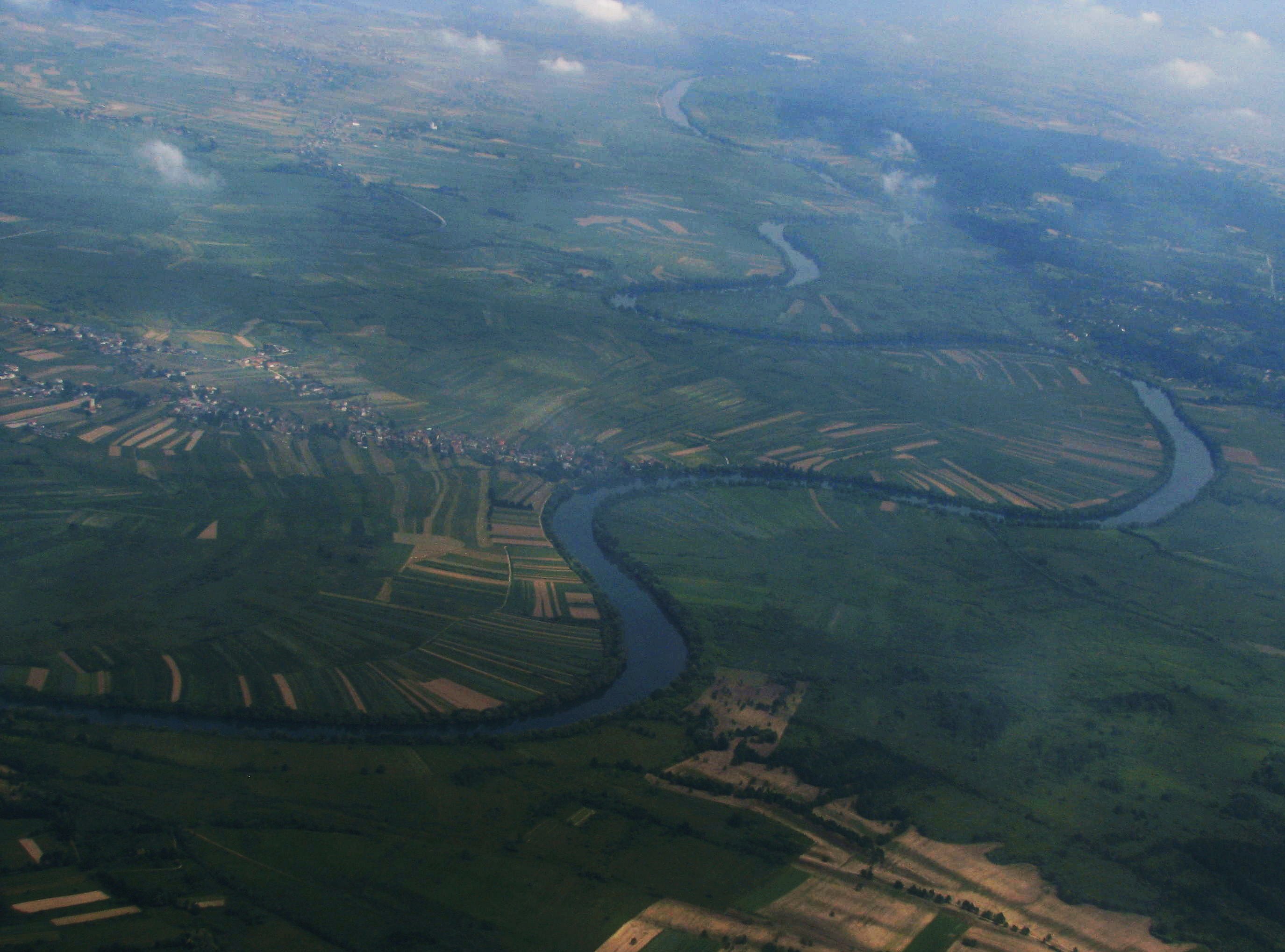|
Kočevje
Kočevje (; ; ''Göttscheab'' or ''Gətscheab'' in the local Gottscheerish dialect; ) is a town and the seat of Municipality of Kočevje in southern Slovenia. Geography The town is located at the foot of the Kočevski Rog karst plateau on the Rinža River in the historic Lower Carniola region. It is now part of the Southeast Slovenia Statistical Region. The Rinža River flows through the town. Lake Kočejve, a former open-pit coal mine, lies northeast of the town center. Climate Kočevje features a humid continental climate (''Dfb''/''Cfb''). Name Kočevje was attested in written sources in 1363 as ''Gotsche'' (and as ''Gotsew'' in 1386, ''Kotsche'' in 1425, and ''propre Koczeuiam'' in 1478). The name is derived from ''*Hvojčevje'' (from ''hvoja'' 'fir, spruce'), referring to the local vegetation. The initial ''hv-'' changed to ''k-'' under the influence of German phonology. Older discredited explanations include derivation from the hypothetical common noun ''*kočev ... [...More Info...] [...Related Items...] OR: [Wikipedia] [Google] [Baidu] |
Municipality Of Kočevje
The Municipality of Kočevje (; ) is a Municipalities of Slovenia, municipality in southern Slovenia. The seat of the municipality is the city of Kočevje. Today it is part of the Southeast Slovenia Statistical Region. In terms of area, it is the largest municipality in Slovenia. It borders Croatia. History In 1247 Berthold (patriarch of Aquileia), Berthold, Patriarch of Patriarchate of Aquileia (state), Aquileia granted the area around Ribnica, Slovenia, Ribnica within the imperial March of Carniola to the Duchy of Carinthia, Carinthian counts of Grafschaft Ortenburg, Ortenburg. When the counts received further estates on the wooded plateau down to Kostel, Slovenia, Kostel on the Kupa, Kolpa River in 1336 from Patriarch Bertram of St. Genesius, Bertram, they called for German-speaking settlers from Carinthia and County of Tyrol, Tyrol. These Germanic people became known as the Gottscheers, and their dialect, Gottscheerish. The Gottscheers lived in isolation in the Gottschee a ... [...More Info...] [...Related Items...] OR: [Wikipedia] [Google] [Baidu] |
Kočevski Rog
Kočevski Rog or Kočevje Rog () or simply Rog is a karstified plateau in the Kočevje Highlands above the Črmošnjice Valley in southeastern Slovenia. The plateau is part of the traditional Lower Carniola region of Slovenia and of the Dinaric Alps. The highest area is the central part, with the 1099-metre-high peak of Veliki Rog. The plateau is densely forested. The only ski slope in Lower Carniola, Rog-Črmošnjice (or Gače) also lies in the vicinity of Rog. The Gottscheers This area, known in German as Gottschee, was settled in the late 14th century by the Carinthian Counts of Ortenburg initially with colonists from the Ortenburg estates in Carinthia and Tyrol, and by other settlers who came from Austrian and German Dioceses of Salzburg, Brixen and Freising. The settlers cleared the vacant and heavily forested land, and established towns and rural villages. The area of Carniola that was to become Gottschee had been a strategic part of the Holy Roman Empire since the ... [...More Info...] [...Related Items...] OR: [Wikipedia] [Google] [Baidu] |
Lower Carniola
Lower Carniola ( ; ) is a traditional region in Slovenia Slovenia, officially the Republic of Slovenia, is a country in Central Europe. It borders Italy to the west, Austria to the north, Hungary to the northeast, Croatia to the south and southeast, and a short (46.6 km) coastline within the Adriati ..., the southeastern part of the historical Carniola region. Its largest town and urban center is Novo Mesto, with other urban centers including Kočevje, Grosuplje, Krško, Trebnje, and Ribnica. Geography Lower Carniola is delineated by the Ljubljana Basin with the city of Ljubljana to the northwest, by the Kolpa River and the border with Croatia with the Gorjanci Mountains to the south and southeast, by the Sava River to the north and northeast, and by Mount Krim, the Bloke Plateau, and the Potok Plateau () to the west. The southernmost region down to the border with Croatia on the Kolpa River is called White Carniola and usually considered part of Lower C ... [...More Info...] [...Related Items...] OR: [Wikipedia] [Google] [Baidu] |
Rinža
The Rinža ( German: Rinse, Rinnse) is a river of Slovenia. It is long and flows through Kočevje. It is the main watercourse of the Kočevje Polje and it is a losing stream. A few kilometers downstream of Kočevje, it goes subterranean. It emerges again as the Bilpa, a tributary of the Kolpa (Kupa). See also *List of rivers of Slovenia 300px, Map of river systems in Slovenia This is a list of rivers of Slovenia. There are 59 major rivers in Slovenia, altogether measuring about in length. The total length of all rivers in Slovenia is , which gives a river density of 1,33 ... References Rivers of Lower Carniola {{Slovenia-river-stub ... [...More Info...] [...Related Items...] OR: [Wikipedia] [Google] [Baidu] |
Southeast Slovenia Statistical Region
The Southeast Slovenia Statistical Region () is a statistical region in southeast Slovenia. It is the largest statistical region. The development of this region is largely the result of industry (the auto industry, pharmaceuticals, and other light industry), which generated nearly half of the gross value added in the region in 2012. According to the latest available data for 2013, 94% of waste water in the region was treated before it was discharged from the public sewage system. This is significantly more than in Slovenia as a whole (78%). The expenditure on research and development (R&D), which amounted to 5.2% of the regional GDP in 2012, highlights the importance of R&D in the region. Businesses accounted for 90% of the sources of financing. The population's age structure in this region is favourable. In mid-2013 the value of the ageing index was 105.2, which means that the ratio between the population 65 or older and the population 15 or less was 105 older people per 100 young p ... [...More Info...] [...Related Items...] OR: [Wikipedia] [Google] [Baidu] |
Gottscheerish
Gottscheerish (''Göttscheabarisch'',Maridi Tscherne: Wörterbuch Gottscheerisch-Slowenisch. Einrichtung für die Erhaltung des Kulturerbes Nesseltal, Koprivnik/Nesseltal 2010. , ) is an Upper German dialect which was the main language of communication among the Gottscheers in the enclave of Gottschee, Slovenia, before 1941. It is occasionally referred to as Granish or Granisch in the United States (< German ''Krainisch'' ' Carniolan'), a term also used for Slovene. Language history Gottscheerish belongs to Southern Bavarian within the Bavarian dialect group. The Bavarian dialec ...[...More Info...] [...Related Items...] OR: [Wikipedia] [Google] [Baidu] |
Slovenia
Slovenia, officially the Republic of Slovenia, is a country in Central Europe. It borders Italy to the west, Austria to the north, Hungary to the northeast, Croatia to the south and southeast, and a short (46.6 km) coastline within the Adriatic Sea to the southwest, which is part of the Mediterranean Sea. Slovenia is mostly mountainous and forested, covers , and has a population of approximately 2.1 million people. Slovene language, Slovene is the official language. Slovenia has a predominantly temperate continental climate, with the exception of the Slovene Littoral and the Julian Alps. Ljubljana, the capital and List of cities and towns in Slovenia, largest city of Slovenia, is geographically situated near the centre of the country. Other larger urban centers are Maribor, Ptuj, Kranj, Celje, and Koper. Slovenia's territory has been part of many different states: the Byzantine Empire, the Carolingian Empire, the Holy Roman Empire, the Kingdom of Hungary, the Republic of Venice ... [...More Info...] [...Related Items...] OR: [Wikipedia] [Google] [Baidu] |
List Of Cities And Towns In Slovenia
There are 69 towns in Slovenia. According to the Local Self-Government Act of the Slovenia, Republic of Slovenia, a town is a larger urban area, urban settlement with more than 3,000 residents and differing from other settlements in its size, economical structure, population, population density and historical development. A settlement acquires the status of town through a decision by the Government of Slovenia. Until 2005, the decision was made by the National Assembly of Slovenia. List of all towns in Slovenia Figures are based on the statistics from the Statistical Office of the Republic of Slovenia. Cities in bold are centres of Municipalities of Slovenia#Urban municipalities, urban municipalities. References External links * {{DEFAULTSORT:List Of Cities and Towns In Slovenia Cities and towns in Slovenia, Lists of cities in Europe, Slovenia Lists of towns by country, Slovenia Lists of populated places in Slovenia, Cities and towns Lists of cities by ... [...More Info...] [...Related Items...] OR: [Wikipedia] [Google] [Baidu] |
Grafschaft Ortenburg
The Counts of Ortenburg () were a comital family in the mediaeval Duchy of Carinthia. Though they had roots in Bavarian nobility, an affiliation with the Imperial Counts of Ortenburg, a branch line of the Rhenish Franconian House of Sponheim, is not established.Hausmann, Friedrich (1994). "Die Grafen zu Ortenburg und ihre Vorfahren im Mannesstamm, die Spanheimer in Kärnten, Sachsen und Bayern, sowie deren Nebenlinien" in ''Ostbairische Grenzmarken - Passauer Jahrbuch für Geschichte Kunst und Volkskunde''. Nr. 36, Passau 1994. History Little is known about the reasons the Ortenburgs settled in the Carinthian Lurngau. No charters are available on the creation of the Ortenburg Castle on the northern slope of Mt. Goldeck above the village of Baldramsdorf, nor about the manner in which the Ortenburgs obtained their property. In 1072, one Adalbert of Ortenburg, probably a younger son of Count Hartwig II of Grögling-Hirschberg (d. 1068/69), served as a ''Vogt'' stattholder in ... [...More Info...] [...Related Items...] OR: [Wikipedia] [Google] [Baidu] |
Vladimir Prebilič
Vladimir Prebilič (born 21 May 1974) is a Slovenian politician for the Vesna party. He was elected member of the European Parliament during the 2024 European Parliament election in Slovenia. He sits in the Greens–European Free Alliance The Greens/European Free Alliance (Greens/EFA) is a political group of the European Parliament composed primarily of Green politics, green political parties. The group consists of European Green Party (EGP), part of the European Free Allianc ... Group in the European Parliament. References 21st-century Slovenian politicians 1974 births Living people MEPs for Slovenia 2024–2029 {{Slovenia-MEP-stub ... [...More Info...] [...Related Items...] OR: [Wikipedia] [Google] [Baidu] |
Kupa
The Kupa () or Kolpa ( or ; from in Roman Empire, Roman times; ) river, a right tributary of the Sava, forms a natural border between north-west Croatia and southeast Slovenia. It is long, with a length of serving as the border between Croatia and Slovenia and the rest located in Croatia. Etymology The name ''Colapis'', recorded in Classical antiquity, antiquity, is presumed to have come from the Proto-Indo-European language, Proto-Indo-European roots ''*quel-'' 'turn, meander' and ''*ap-'' 'water', meaning 'meandering water'. An alternative interpretation is ''*(s)kel-''/''*skul-'' 'shiny, bright', meaning 'clear river'. Course The Kupa originates in Croatia in the mountainous region of Gorski Kotar, northeast of Rijeka, in the area of Risnjak National Park. It flows a few kilometers eastwards, receives the small Čabranka River from the left, before reaching the Slovenian border. It then continues eastwards between the White Carniola region in the north and Central Croat ... [...More Info...] [...Related Items...] OR: [Wikipedia] [Google] [Baidu] |
Austrian Empire
The Austrian Empire, officially known as the Empire of Austria, was a Multinational state, multinational European Great Powers, great power from 1804 to 1867, created by proclamation out of the Habsburg monarchy, realms of the Habsburgs. During its existence, it was the third most populous monarchy in Europe after the Russian Empire and the United Kingdom of Great Britain and Ireland, United Kingdom, while geographically, it was the third-largest empire in Europe after the Russian Empire and the First French Empire. The empire was proclaimed by Francis II, Holy Roman Emperor, Francis II in 1804 in response to Napoleon's declaration of the First French Empire, unifying all Habsburg monarchy, Habsburg possessions under one central government. It remained part of the Holy Roman Empire until the latter's dissolution in 1806. It continued fighting against Napoleon throughout the Napoleonic Wars, except for a period between 1809 and 1813, when Austria was first allied with Napoleon ... [...More Info...] [...Related Items...] OR: [Wikipedia] [Google] [Baidu] |





